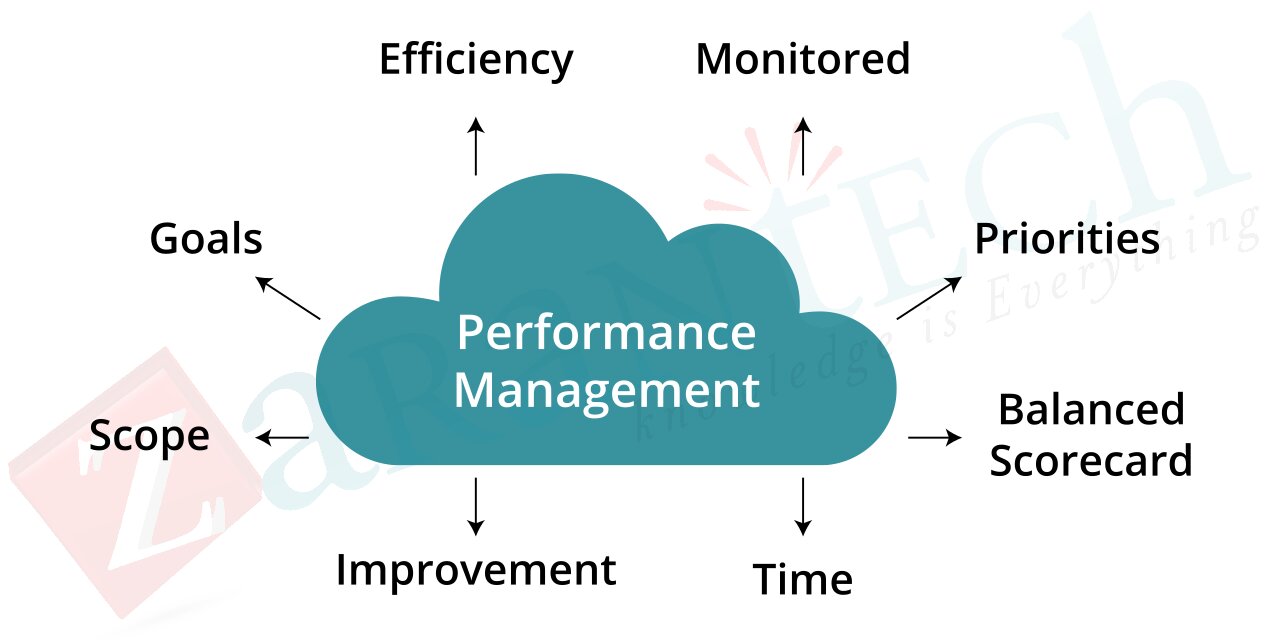Top 10 ways to enhance SAP SuccessFactors Performance Management System
Category: SAP SuccessFactors - EC & PMGM Posted:Oct 23, 2018 By: Robert Presently, most of the organizations have a vast workforce environment and to manage them efficiently, they should have a simplified HR process. SAP SuccessFactors is an integrated cloud-based HR solution which is utilized to manage the entire activity of the organization’s workforce. It is a complete HCM suite which includes the whole HR process elements starting from payroll to employee management. The SAP SuccessFactors description involves recruiting and onboarding, learning and development, performance and compensation, HR analytics and workforce planning to deliver the business strategy.
Presently, most of the organizations have a vast workforce environment and to manage them efficiently, they should have a simplified HR process. SAP SuccessFactors is an integrated cloud-based HR solution which is utilized to manage the entire activity of the organization’s workforce. It is a complete HCM suite which includes the whole HR process elements starting from payroll to employee management. The SAP SuccessFactors description involves recruiting and onboarding, learning and development, performance and compensation, HR analytics and workforce planning to deliver the business strategy.
Among all these factors, performance management is one of the most popular topics. Due to the ever-increasing business pressure, the organization should be more effective and efficient so that they execute better business strategy and remain competitive. With the help of SAP SuccessFactors performance management system, the organization can effectively manage the performance of their employees. Nowadays, organizations are facing brutal competition and small budgets, and thus they should execute efficient business strategies. For the successful implementation of business strategies, the organizations require a workforce which clearly understands all the tactical business objectives and can quickly adjust as per the business requirements. The SAP SuccessFactors, Performance management system helps the organizations to confirm the strategy and align the goal, continuously enhance the employee’s performance using progressing coaching and feedback, correctly evaluate and recognize the best talent. In this post, we will discuss SAP SuccessFactors performance management system and different ways to enhance the performance management review process.
What is Performance Management System?
In general, performance management is a procedure in which the managers and employees of an organization work together, with the goal that they can plan, monitor and evaluate an employee’s work objectives and provide a contribution to the organization. Performance management is the constant process of setting targets, measuring employee’s growth and offering on-going training and input to confirm that the employees are meeting their business goals and career objectives.
A properly designed performance management system is required, to upgrade the organization’s performance. It helps to get through the competition within the companies. Performance management is essential to bring in line various main organizational functions that support to achieve the company’s objectives. It includes planning, implementation, reviewing of a different process, that help to monitor the workforce performance, which further helps in enhancing the growth of single employee and organization.
Usually, while stating performance management, the very first thing which comes in people mind is either the employee performance assessment or review. Although, performance management includes many more processes. Adequately created appraisals should be able to represent a summary of an on-going, year-round dialogue, etc. With the help of an effective performance management process, the managers will be able to assess and measure the performance of the single workforce and enhance the productivity:
- By bringing in line the individual employee’s daily activities with planned business objectives.
- Recording performance of particular workforce to encourage compensation and career planning decisions.
- By creating a focus for skill advancement and learning activity decisions.
- Offering perceptibility and clarifying accountability associated with the performance opportunities.
- By creating documentation for authorized purposes, to support decisions and decreasing clashes.
Importance of Performance Management:
The main reason to ensure that the performance management processes are working fine is to stiffen the association between the strategic business objectives and daily activities. The useful goal settings when integrated with a technique to track progress and recognize difficulties contribute to success and bottom line results. Frequently monitoring progress in contrast to performance goals and objectives also helps to identify and reward the employees for their performance and excellent effort, this in turn, contributes to job satisfaction and productivity. To ensure that the employees are performing well at their jobs and they feel that they are adding well, the employees should understand the individual goals and how they are appropriate for the more prominent organization. With the help of innovative technology-based solutions, the employees can see the goals across entire organizations, that provides wide-ranging reporting options and also decreases paperwork about ninety percent.
Implementing performance management best practices effectively provides several benefits such as time and cost saving, efficiency, performance, reduces conflicts, accuracy, consistency, etc.
Top 10 ways to enhance the performance management process:
Performance management is the essential element of SAP SuccessFactors HCM suite, and it can be enhanced in various ways.
1. Setting of Goals Effectively: The very first step is to set the goals. Goals are the foundation for performing any process effectively. While creating goals, there are two important elements to be considered. Firstly, are the goals are written clearly and objectively and secondly, are they contributing directly to the success of any business strategy. In an organization, the critical job responsibilities and the prospect should act as the chief guide and reference. The goals should be established which not only focuses on what is expected but also how it will be accomplished. For instance, “what” includes the expected quality and quantity, deadlines and cost to deliver, etc. whereas how refers to the behavior confirmed to accomplish the results like focusing on customer service.
The departmental managers are responsible for setting the goals for their departments, based on organization-wide goals. These goals should be accessible to all the managers to confirm that there is no overlap, reduce clashes and permits followers of various departments to observe where they support each other. Each departmental manager shares the overall goals with their department and connects with the employees to recognize their individual performance goals and plans. The accepted framework, to create a valid target is the “SMART” goals.
S- Specific
M-Measurable
A-Achievable
R-Result Oriented
T–Time-bound
The goals created using the above framework would be easily understandable, visualized and evaluated.
2. Start with Performance Planning: With the help of recognized goals, performance planning will help in setting the stage by communicating objectives. It also establishes an actionable plan to guide the employee to successfully accomplishment of goals. Performance planning is a cooperative process between the manager and the employee of an organization, however; it will include some elements which are not negotiable. You have to start with the job description and find significant job outlooks which then can be simplified for each major area.
Well, it is essential to know the long-term and short-term goals under each important input area including the action plans. The goals are weighted to understand the priorities. The specific details associated with the progress against the goals will be evaluated and discussed. Next step is to know any difficulties that may stand in the way for achieving these goals. If the problem is associated with the skills or behavior than a proper plan should be developed to solve it, i.e., training, etc. The employee and manager will use the performance planning document as a reference document to regularly monitor the progress against goals, re-assess goals, modify the goals as per the business needs, re-examine training and resource requests. Performance planning and ongoing performance feedback are important exercises as they empower continuous improvement.
3. Confirm the ongoing process: Performance planning, performance monitoring, feedback, and coaching are continuing processes and should provide support for the creation of performance appraisal, which also supports the other operations associated to rewards, learning, and development.
4. Collect information from various sources: Collecting performance information from multiple sources enhances objectivity and confirms all the aspects that influence performance. This information should involve objective data like sales reports, call records, etc. The other valued detail should include feedback from others, outcomes of individual observation, documentation of ongoing discussion, records of any external or environmental factors that affect the employee’s performance. Many assessments may also comprise an employee self-evaluation. The other documents which help to define the performance ideas are, previous performance evaluations, present departmental and organizational objectives and the standards associated with the career objectives. The organization may use the 360-degree approach to collect the feedback from other employees.
While assessing performance, objectivity is necessary; it starts with simplicity about job prospects and evaluation procedures. To confirm objectivity certain checks and balances can be created. At the time of evaluations managers usually make errors, and the initial step is to correct those errors. Organization-wide reliable processes contribute to justice and objectivity. It is evident that every employee not requires any access to other employee’s performance assessment results; however, methods such as calibration meetings will help to ensure consistency. In this particular process, the managers and staff with the same positions meet and deliberate the appraisals before they settled and shared with the employees.
5. Enhance productivity using better Goal Management: With the help of regular goal tracking, the employee and the management can get the opportunity to deliver the required feedback, make modifications to performance plan, handle difficulties, etc. The goal progress discussion including the performance feedback should be brought, and it should be objective and supportive. It is critical that the manager of the organizations pay attention to the employee’s perceptions and joins the employee’s explanations into future strategies. On the other hand, the employees may experiences difficulties which manger may not be able to observe.
6. Documentation: Documentation is an essential step, to support the performance decisions. While documenting the details of an incident, it should also include any succeeding follow-up. The performance log is a record maintained by a manager for each employee. The maintenance of performance record supports numerous purposes. In this particular record, the managers can record the successes or the performance of the workforce which needs improvement. The manager will use this historical record of employee ’s at the time of appraisal, and he does not have to depend on the current memory. This documentation will also support the performance decisions or ratings. The manager also uses this documentation as a reminder. For example, if an employee performs well and meets the deadlines consistently, this record can be used as a reminder to provide an appreciation for a good job. Additionally, the performance record can also be utilized as a reminder for coaching, i.e., history of future responsibilities, so that manager can discuss with the employees to make sure whether they are ready for their task ahead. This record should be developed with the help of principles of performance management which should be objective and observable.
7. Sufficiently Prepare and Train the managers: It is a challenging job to manage the performance of the individual person, and it needs many skills. The manager requires lots of training to make sure that they are sufficiently prepared to finish all the tasks associated with performance management. On the other hand, the manager should know the human behavior and should be able to motivate and guide the team. He should also provide coaching and should be smart enough to deal with the conflicts. The manager should be an observer and able to evaluate any situation. He should be able to identify problems which restrict the performance. A manager who feels that he is sufficiently ready to give and receive feedback, deliver performance evaluation and also conduct a performance evaluation meeting will contribute to the successful functioning of the process.
8. The review: The review or the appraisal should be a written confirmation which has already been discussed with the employee, the review should be prepared from job expectation, essential areas of contribution and previously discussed objectives and evaluation techniques. It should also include key job responsibilities, an existing project, related skills, goals, and successes. Already accomplished performance evaluations should be used as a reference document. The review should also have a separate column which permits employees to record their comment and participation.
9. Associate performance management with rewards and appreciation: Nowadays, most of the organizations are associating performance to compensation. This link cannot be established successfully without any knowledge of performance management processes. The accurate documentation related to progress against performance expectations also ensures proper appreciation for a good job, this can be offered through various ways such as formal recognition events or secretly delivered feedback. It is essential to record the benefits of a reliable process across the organization; this will create a sense of justice and increases job satisfaction. The employees should know that if a single employee in one department is recognized as the best performer and rewarded accordingly, then an employee with a similar designation in other departments will receive the same compensation.
10. Assess and inspire full participation and success of an Employee: The performance management process is designed in such a way that it should add value to the organization’s success. Otherwise, it will result in the problem of non-participation. The method should be effective and efficient and should be simple. The performance management process will be kept on track using automated reminders and scheduling tools. The other elements are upper-level management support which contributes to success. The existing culture of the organization should also be considered. The employees should discuss the performance honestly and should know the different ways of enhancing to move ahead.
Learn SAP SuccessFactors from our Industry Experts
Conclusion:
It is not an easy task to carry out an effective performance management process in an organization. But with the help of SAP SuccessFactors performance management system, the performance management process will be performed efficiently and effectively by making easy changes. The SuccessFactors performance management process indicates that what is going on in the organizations. It helps in verifying whether the company’s employees are productive, trained and satisfied and whether there is an effective synchronization between daily tasks and long-term value creation. The above-discussed point will help in simplifying the choice, execution, and evaluation of an effective performance management process and it will be helpful in the employee performance reviews.





 99999999 (Toll Free)
99999999 (Toll Free)  +91 9999999
+91 9999999